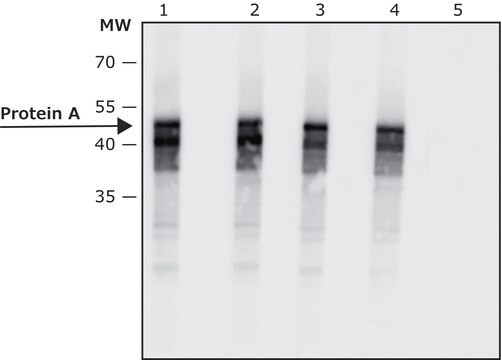General description
Pancreas performs both the endocrine and the exocrine function. The bulk of pancreas is composed of exocrine cells that produce digestion enzymes which are released into ducts to be emptied into the duodenum. The endocrine pancreas is composed of islets of Langerhans that produce hormones. At least five distinct endocrine cell types have been identified in the endocrine pancreas, each producing a different hormone. Beta cells produce insulin, which is considered as an anabolic hormone and regulates blood glucose levels and is also involved in fat and protein synthesis. Alpha cells produce glucagon that acts when blood glucose levels are low. Ductal cells of pancreas form the epithelial lining of the branched tubes that deliver digestive enzymes into the duodenum. They also secrete bicarbonate to neutralize acidic contents coming in from stomach. Duct cells may contribute up to 10% of all pancreatic cells. Acinar cells function as a unit of the exocrine pancreas and they synthesize, store, and secrete digestive enzymes (lipase, alpha amylase, trypsin, and chymotrypsin), which under normal physiological conditions are activated only after reaching the duodenum. Premature activation of these enzymes within pancreatic acinar cells can lead to acute pancreatitis. Clone HIC-2B4 can be used to detect all endocrine cells in human pancreatic tissue. (Ref.: Dorrell, C., et al. (2008). Stem Cell Research (2008). 1(3); 183-194; Grapin-Botton, A (2005). Int. J. Biochem. Cell Biol. 37(3); 504-510; Leung, PS (2006). Int. J. Biochem. Cell Biol. 38(7); 1024-1030).
Specificity
Clone HIC1-2B4 detects human pancreatic enriched islet cells.
Immunogen
Human pancreatic enriched islet cells containing low levels of exocrine and ductal cells.
Application
Anti-HPi2, clone HIC1-2B4, Cat. No. MABS1999, mouse monoclonal antibody that detects human pancreatic enriched islet cells. and has been tested for use in Flow Cytometry, Immunofluorescence, and Immunohistochemistry (Paraffin).
Flow Cytometry Analysis: A representative lot detected HPi2 in Flow Cytometry applications (Dorrell, C., et. al. (2008). Stem Cell Res. 1(3):183-94; Dorrell, C., et. al. (2016). Nat Commun. 7:11756).
Immunofluorescence Analysis: A representative lot detected HPi2 in Immunofluorescence applications (Dorrell, C., et. al. (2008). Stem Cell Res. 1(3):183-94).
Research Category
Signaling
Quality
Evaluated by Immunohistochemistry (Paraffin) in human pancreatic tissue sections.
Immunohistochemistry (Paraffin) Analysis: A 1:50 dilution of this antibody detected HPi2 in human pancreatic tissue sections.
Physical form
Format: Purified
Protein G purified
Purified mouse monoclonal antibody IgG2b in buffer containing 0.1 M Tris-Glycine (pH 7.4), 150 mM NaCl with 0.05% sodium azide.
Storage and Stability
Stable for 1 year at 2-8°C from date of receipt.
Other Notes
Concentration: Please refer to lot specific datasheet.
Disclaimer
Unless otherwise stated in our catalog or other company documentation accompanying the product(s), our products are intended for research use only and are not to be used for any other purpose, which includes but is not limited to, unauthorized commercial uses, in vitro diagnostic uses, ex vivo or in vivo therapeutic uses or any type of consumption or application to humans or animals.





